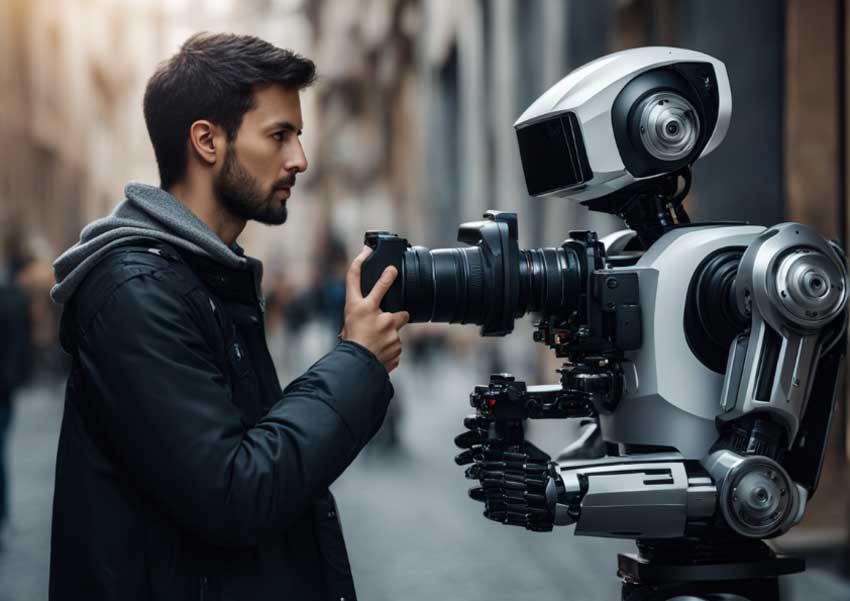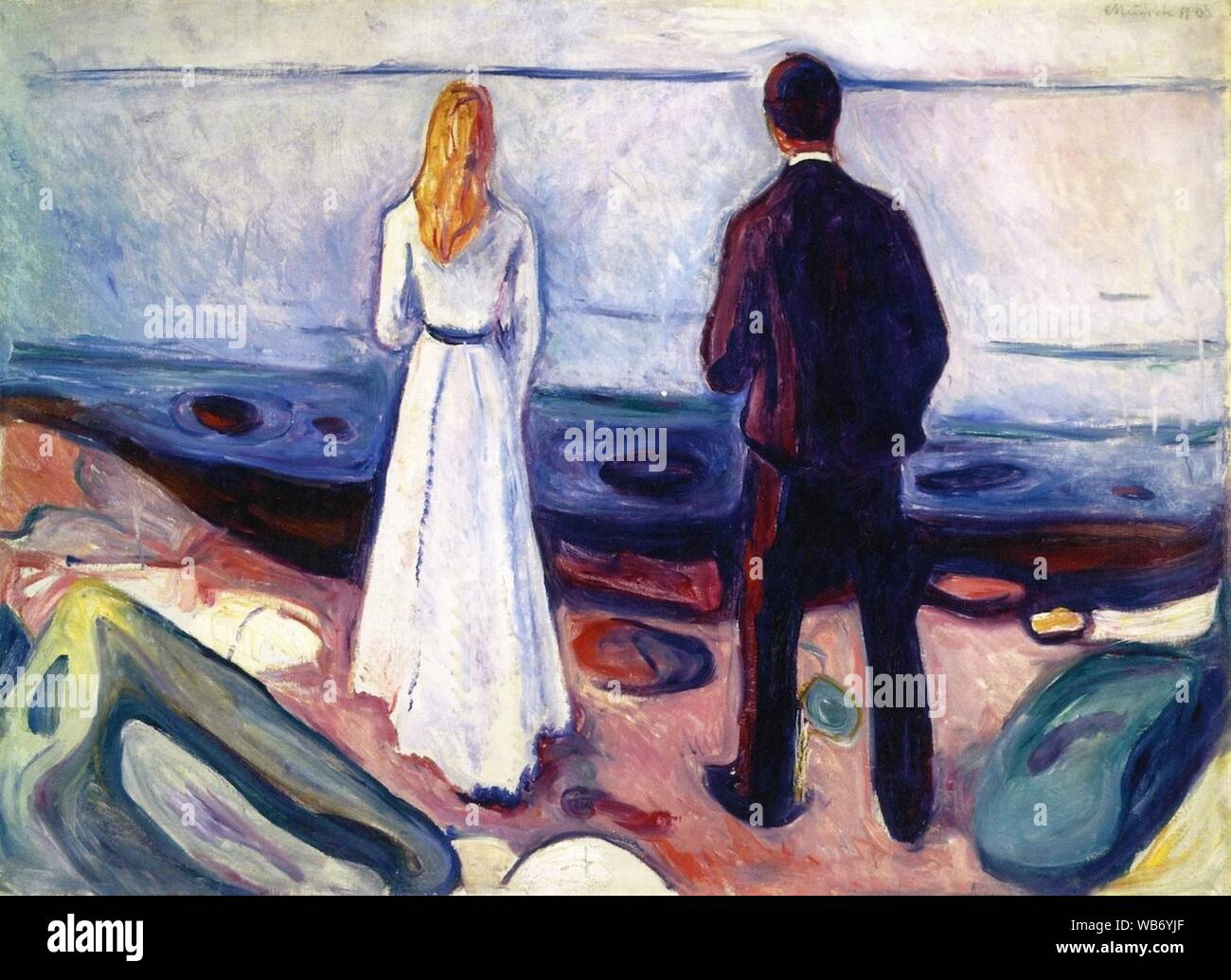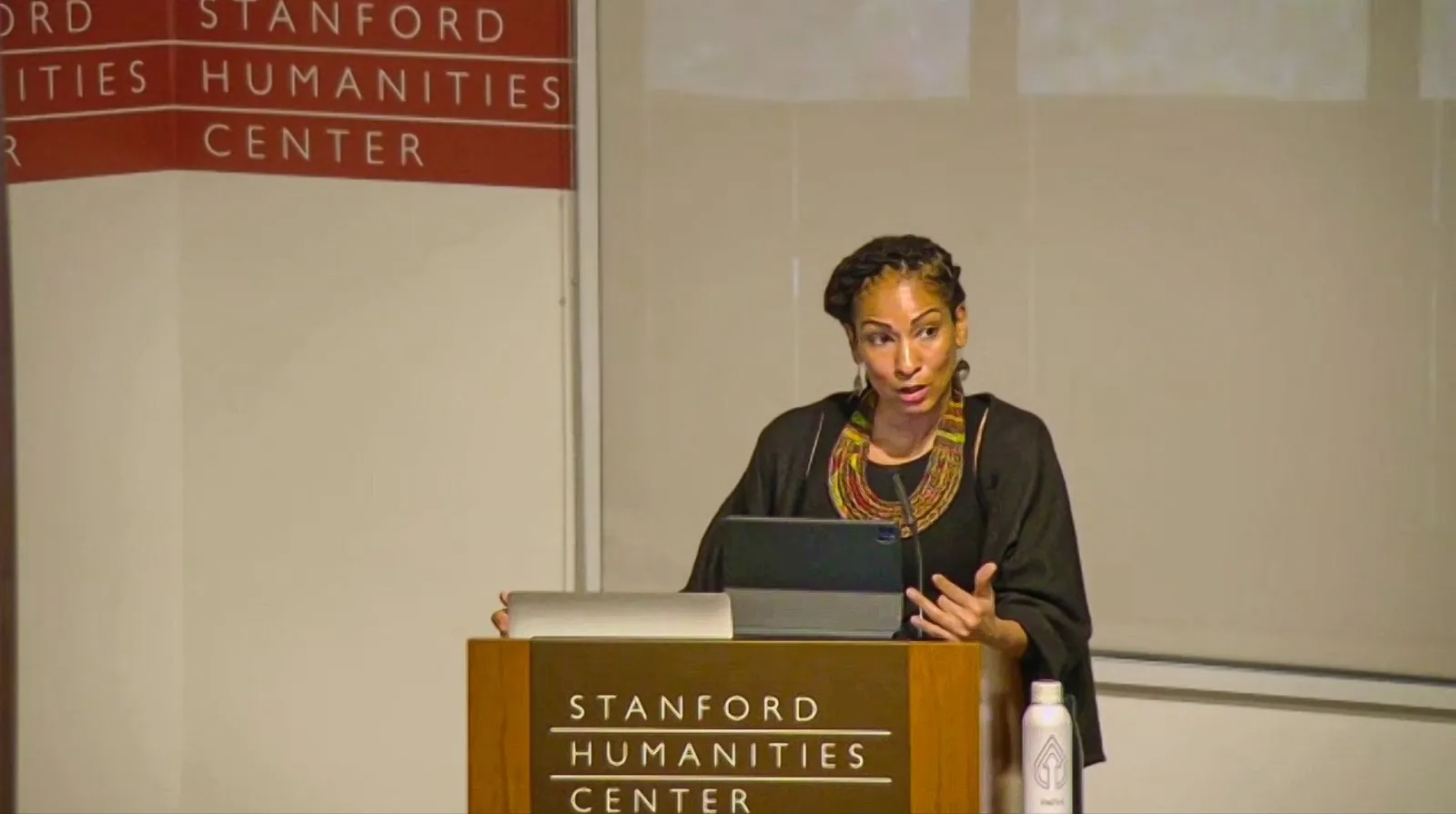AI in photojournalism is transforming the landscape of visual storytelling, as groundbreaking advancements in artificial intelligence photography create both exciting opportunities and daunting challenges. With the proliferation of AI-generated images, the trustworthiness of authentic journalism is increasingly scrutinized, highlighting significant photojournalism challenges. Notably, experts like Emmy-winning visual storyteller Kira Pollack are harnessing the power of AI to preserve photo archives and safeguard the visual record of history. Pollack’s innovative approach could redefine how technology and journalism intersect, ensuring that the legacies of renowned photographers are not only maintained but enhanced. As the future unfolds, leveraging AI may well turn out to be a vital strategy for preserving the integrity of photography in an era filled with uncertainty and rapid technological evolution.
The role of artificial intelligence in contemporary image-making, particularly in the realm of visual news reporting, is gaining attention for its potential to reshape the practice of capturing and preserving history. Many in the photography community view this technological shift as both a threat and an opportunity, especially in addressing the pressing issues of trust in visual authenticity. New methods are emerging for safeguarding the extensive collections of photographs that document pivotal events, prompting creators to explore the relationship between technology and journalism further. Figures like Kira Pollack, a pivotal voice in this dialogue, advocate for innovative approaches that can rejuvenate photo archives while tackling the ethical implications of image manipulation. As we navigate these changes, the conversation around how we can best utilize AI tools to support the art of storytelling continues to grow more critical.
AI in Photojournalism: A Double-Edged Sword
Artificial Intelligence is making waves across various industries, but its role in photojournalism is particularly crucial. With tools capable of generating hyper-realistic images, AI presents a double-edged sword; on one side, it threatens the very foundation of authenticity in visual storytelling, while on the other, it offers innovative methods to preserve and enhance our understanding of historical events. For photojournalists like Kira Pollack, navigating this landscape is essential for ensuring that photojournalism remains credible and relevant in an era of misinformation and digital manipulation.
Kira Pollack, with her extensive background at influential publications like Vanity Fair and Time Magazine, illustrates the need for adaptability within the profession. As AI technologies evolve, so must the strategies employed by photojournalists to protect their work. By recognizing the potential of AI to preserve vast photo archives, Pollack argues that the discipline can not only safeguard its resources but also utilize AI to narrate deeper and more immersive stories. The balance between embracing new technologies and maintaining the integrity of visual truth remains a central topic in AIs integration into photojournalism.
Preserving Photo Archives: The Role of Technology
One of the most pressing challenges in photojournalism is the preservation of photo archives, which embody the visual history captured through the lens of influential photographers. These archives are not just boxes of old photographs; they are narratives waiting to be explored. Kira Pollack emphasizes the need to manage these materials responsibly, ensuring they are not only preserved but also accessible to future generations. By utilizing AI, organizations can not only catalog and organize these archives but also provide context that adds depth to the stories these images tell.
The integration of AI into the preservation of photo archives presents a transformative opportunity. Pollack’s research highlights the ability of AI to analyze complex images and provide insights that human viewers may overlook. For instance, through AI analysis, archivists can better understand the emotional weight of a photo, its historical significance, and the context behind the captured moment. This technological approach ensures that the richness of photojournalism is preserved and conveyed accurately, ultimately honoring the legacies of the photographers who captured these unforgettable moments.
The Intersection of Technology and Journalism
The relationship between technology and journalism has always been complex, with each influencing the other in significant ways. The emergence of AI is reshaping the landscape of photojournalism, presenting both challenges and opportunities. Technologies such as generative AI have raised concerns about authenticity and the potential for misinformation, while also offering tools that can enhance storytelling and improve the management of visual content. As Kira Pollack navigates this intersection, she advocates for a thoughtful approach that prioritizes ethical considerations alongside technological innovation.
By fostering dialogue and collaboration among technologists, ethicists, and journalists, Pollack’s work at the Shorenstein Center aims to redefine how the journalism community approaches these emerging technologies. The ultimate goal is to leverage AI not as a replacement for traditional journalistic practices but as a complement that can enrich the storytelling experience. This collaborative spirit is necessary to tackle the challenges presented by digital advancements while ensuring that the core values of journalism—truth, transparency, and accountability—remain intact.
Kira Pollack’s Vision for the Future of Photojournalism
Kira Pollack envisions a future where AI serves as a powerful ally to photojournalists, aiding in the preservation and enhancement of visual archives. Her dedication to this mission stems from her understanding of the profound impact that photojournalism has on society’s comprehension of historical events. Through her fellowship at the Shorenstein Center, she hopes to explore innovative ways of using AI to enrich historical narratives and make photo archives more accessible to researchers, educators, and the wider public.
Pollack’s vision is not limited to mere preservation; it’s about redefining the relationship between technology and storytelling. She aspires to create dynamic archives where the narratives of photographers are elevated through AI tools that facilitate connection and deeper understanding. A critical part of her research is to ensure that as we embrace these technologies, we remain vigilant about the ethical challenges they present. Her work seeks to guide the industry toward a future where technology enhances the journalistic mission, allowing for a more informed public and a more vivid historical record.
AI’s Potential to Enhance Photojournalism Ethics
As the capabilities of artificial intelligence continue to grow, ethical considerations in photojournalism have become more pressing. There are valid concerns regarding copyright issues and the potential misuse of visual content, as AI models can inadvertently scrape and utilize photographers’ work without authorization. Kira Pollack emphasizes the importance of establishing robust frameworks that prioritize the rights of photographers while promoting technological advancements. This intersection of ethics and innovation is crucial in ensuring that AI contributes to the field positively.”
Pollack advocates for an open dialogue that involves various stakeholders in the industry, such as technologists, ethicists, and photographers, to explore the ethical implications of AI. By keeping these discussions at the forefront, the photojournalism community can better navigate the complexities associated with new technologies. Ensuring that AI enhances rather than undermines the integrity of photojournalism is critical. This safeguarding is paramount for maintaining trust between photojournalists and their audience while discovering new pathways for storytelling.
AI and the Future of Storytelling in Journalism
The rise of AI presents unprecedented opportunities for storytelling in journalism, particularly in the realm of photojournalism. The ability for AI to dissect and analyze vast amounts of visual data quickly can transform how stories are told and interpreted, providing layers of meaning that might be difficult for human analysts to uncover. Kira Pollack’s innovative approach to utilizing AI not only preserves historical archives but also enriches storytelling through enhanced context and analysis.
As journalists seek to engage audiences in deeper ways, Pollack envisions a future where AI tools enable a more immersive storytelling experience. By tapping into technology to enhance the presentation of visual narratives, photojournalists can convey the complexity of human experiences more effectively. This shift could foster a greater appreciation for the role of photojournalism in documenting and interpreting events, ultimately inspiring a more informed and engaged public.
Challenges in Adopting AI in Photography
Despite the potential benefits of incorporating AI in photography, numerous challenges remain. Photojournalists must address issues of trust and authenticity as fabricated images become more common. The risk that AI-generated content, devoid of human nuance, could mislead audiences is a valid concern that requires careful navigation. Kira Pollack stresses the importance of establishing guidelines that protect the authenticity and integrity of photojournalism while integrating AI tools into the workflow.
Furthermore, photojournalists must grapple with the speed at which AI technologies are evolving. Adopting these innovations requires not only technical adaptation but a thorough understanding of ethical implications, copyright laws, and the potential impact on public perception. Establishing robust educational resources for photographers on the responsible use of AI is essential in navigating these challenges and ensuring that advancements serve the core mission of photojournalism.
The Evolving Role of Photojournalists in the AI Era
In the age of AI, photojournalists find their roles evolving rapidly as technology changes the landscape of visual storytelling. With generative AI leading to the creation of synthetic images, the demand for authentic, genuine photojournalism remains high. Photojournalists must position themselves as trusted sources of visual information, using their unique skills to capture reality while leveraging AI to enhance their work. Kira Pollack emphasizes the importance of this evolution, asserting that the role of photojournalists will include more than just capturing images; they will also become curators of meaningful narratives.
As the landscape continues to shift, engagement with both technology and the storytelling process becomes essential. Pollack’s work highlights the importance of adapting to these changes while retaining the values at the heart of photojournalism: truth and integrity. By embracing the evolving tools available, photojournalists can further their mission to connect audiences with real-life events, all while ensuring that their contributions remain significant within the broader narrative of journalism.
Using AI to Address Copyright Concerns in Photojournalism
Copyright concerns have always been a critical issue in photography, and with the rise of AI, these issues have only become more pronounced. The risk of unauthorized use of photographers’ works for AI training poses a serious threat to content creators in the industry. Kira Pollack’s work is focused on exploring how AI can be utilized not just as a tool for generating new images but also for safeguarding the rights of photographers. Finding pathways to protect intellectual property while leveraging technological advancements is vital for the survival of the photography profession.
By developing technology that can track usage rights and ensure proper credit is given, Pollack aims to foster a trustful relationship between AI tools and content creators. This approach emphasizes the necessity of safeguarding the integrity and rights of image creators, which is paramount in an age where digital manipulation is rampant. Through engagement and research, photojournalists can work towards establishing norms and practices that protect their work while embracing technological advancements.
Frequently Asked Questions
How is AI impacting photojournalism today?
Artificial intelligence is profoundly influencing photojournalism by introducing both challenges and opportunities. While AI tools can produce synthetic images that threaten the authenticity of visual storytelling, they also offer innovative solutions for preserving photo archives, enhancing the way photojournalists manage and contextualize their work.
What are the main challenges photojournalists face with AI technology?
Photojournalism faces significant challenges due to AI, including the blurring of trust in authentic images and concerns about copyright violations. As AI-generated images proliferate, the integrity of real photojournalism is jeopardized, raising urgent issues of ownership and the protection of visual truth.
How is Kira Pollack using AI to preserve photojournalism archives?
Kira Pollack is exploring ways to harness AI to organize and preserve the extensive archives of photojournalists. Her research focuses on using AI to analyze, catalog, and contextually enrich these archives, ensuring that critical visual histories remain accessible while maintaining respect for the original photographers’ rights and intentions.
What benefits can AI provide to photojournalism archives?
AI holds substantial potential benefits for photojournalism archives by automating the cataloging process, identifying and highlighting significant content, and providing insights about the imagery. This can enhance discoverability and engage audiences with the narratives behind the images, all while preserving the photographers’ legacy.
What ethical considerations arise from the use of AI in photojournalism?
The use of AI in photojournalism raises key ethical concerns, particularly regarding authorship, ownership, and the potential for unauthorized data training. Ensuring that AI tools do not exploit photographers’ work or distort visual truths is essential as the industry adapts to new technologies.
Are there examples of AI successfully analyzing photojournalism?
Yes, experiments conducted by Kira Pollack and her colleagues with photojournalist Christopher Morris showed that AI can effectively analyze complex conflict images, identifying elements like emotions and settings with notable accuracy. This showcases AI’s potential for enriching the understanding of impactful photographic narratives.
How can AI contribute to the future of photojournalism?
AI can contribute to the future of photojournalism by acting as a facilitator for archiving and contextualizing images, helping photojournalists preserve their work’s integrity and legacy. By developing responsible AI applications, the industry can enhance storytelling without compromising visual trust.
What is the role of Kira Pollack in addressing AI’s challenges in photojournalism?
Kira Pollack is dedicated to exploring the intersection of AI and photojournalism as a Shorenstein fellow. Her work aims to understand how AI can empower photographers to safeguard their archives and maintain the core values of photography—truth, authorship, and memory—while navigating the rapidly evolving media landscape.
| Aspect | Details |
|---|---|
| Threats to Photojournalism | AI poses risks like copyright violations and the creation of synthetic images that blur the line between reality and manipulation. |
| Kira Pollack’s Role | Pollack is a leading visual storyteller and a Shorenstein Fellow researching how AI can protect the archives of photojournalists. |
| AI’s Potential as a Tool | AI can be used to catalog and preserve photojournalistic works, offering detailed analysis and insights while safeguarding authentic images. |
| Experimentation with AI | Pollack’s team has conducted case studies analyzing images from war photography, showcasing AI’s ability to interpret complex visuals. |
| Concerns about Trust | The rapid spread of AI-generated images raises concerns about public trust and the need for ethical use of AI in preserving visual integrity. |
| Future Aspirations | Pollack aims to contribute insights back to the photojournalism community, ensuring a proactive approach to technological changes. |
Summary
AI in photojournalism represents both a challenge and an opportunity. While artificial intelligence poses significant threats to the authenticity and ownership of images, it also offers innovative tools for preserving and cataloging the essential work of photojournalists. Kira Pollack’s research highlights a proactive approach toward leveraging AI technologies to safeguard visual history while maintaining the integrity of photography, ensuring that the voices of photojournalists continue to resonate in an era increasingly defined by digital manipulation.



